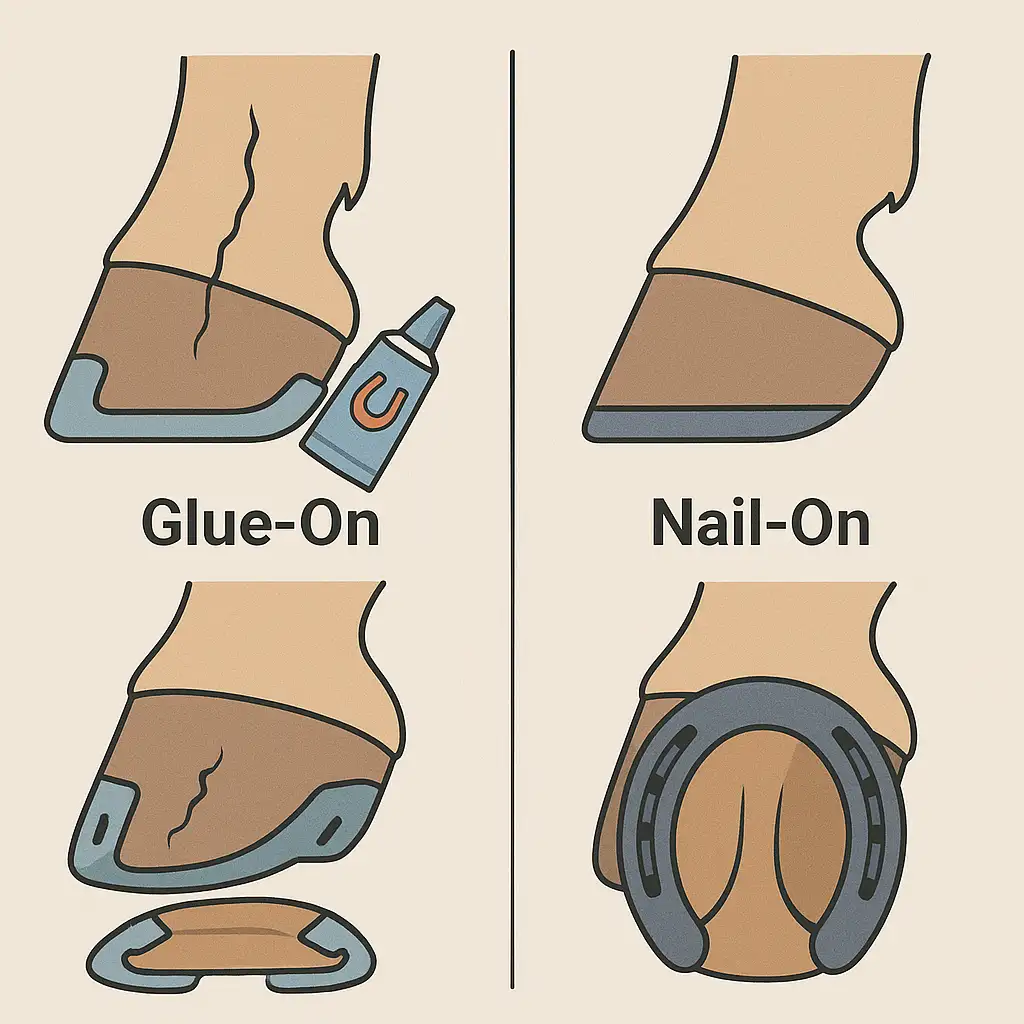When your horse has thin hoof walls, sensitive soles, or is recovering from injury or laminitis, even the choice of horseshoe can make a huge difference in recovery and comfort. One of the biggest decisions you’ll face is whether to use nail-on horseshoes or explore glue-on alternatives. So, which is the better option — especially for compromised hooves?
Let’s break it down.
🔨 Nail-On Horseshoes: The Traditional Standard
Nail-on horseshoes have been the go-to for centuries. They’re reliable, widely available, and affordable.
But here’s the catch — they require strong, healthy hoof walls. Nails are driven into the outer hoof wall, which can:
- Worsen cracks or splits
- Cause additional trauma in already weakened hooves
- Be painful if the wall is thin or brittle
- Lead to nail holes that become infection risks
For horses with compromised hoof integrity, nail-on shoes might do more harm than good.
🧪 Glue-On Horseshoes: The Modern, Gentler Option
Glue-on horseshoes are applied using a strong adhesive instead of nails. The result?
✅ Zero nail holes
✅ No further hoof wall damage
✅ Even pressure distribution
✅ Better shock absorption (especially with composite materials)
✅ Ideal for rehab cases like laminitis, white line disease, or thin walls
Some modern glue-on shoes, like those from Duplo, even come with steel cores for added strength and are reusable in some cases.
👣 When to Choose Glue-On
Glue-on horseshoes are often the best solution when:
- Your horse has damaged or paper-thin hoof walls
- The horse is recovering from laminitis, abscesses, or injuries
- You need orthopedic or therapeutic support
- You want to avoid trauma from nailing
Yes, glue-on shoes require more prep time, and your farrier needs experience with adhesive bonding — but for sensitive horses, they’re a game-changer.
⚖️ Pros & Cons at a Glance
| Feature | Nail-On Horseshoes | Glue-On Horseshoes |
|---|---|---|
| Hoof wall stress | High | Minimal |
| Suitable for thin hooves | ❌ Risky | ✅ Recommended |
| Application speed | Fast | Slower (more prep needed) |
| Skill required | Standard farrier | Specialized farrier |
| Best for rehab cases | ❌ Limited | ✅ Excellent |
| Reusability | Sometimes | Varies by brand |
| Cost | Lower upfront | Slightly higher upfront |
🧼 What About Maintenance?
With glue-on shoes, hoof prep is critical. The hoof must be:
- Dry and clean
- Lightly roughened for grip
- Sometimes paired with padding like urethane or silicone for extra comfort
If properly applied, glue-on shoes can last 2–4 weeks or more, depending on terrain and usage.
🐴 The Bottom Line
If your horse has strong, healthy hooves, nail-on shoes are a reliable choice.
But if you’re dealing with:
- Thin hoof walls
- Sensitive soles
- Chronic hoof problems
- Rehab from injury or disease
…then glue-on horseshoes are almost always the safer, kinder, and smarter choice.
At Duplo, we offer a full range of composite glue-on horseshoes — designed to offer both comfort and durability, with options for studs, padding, and even winter traction.
